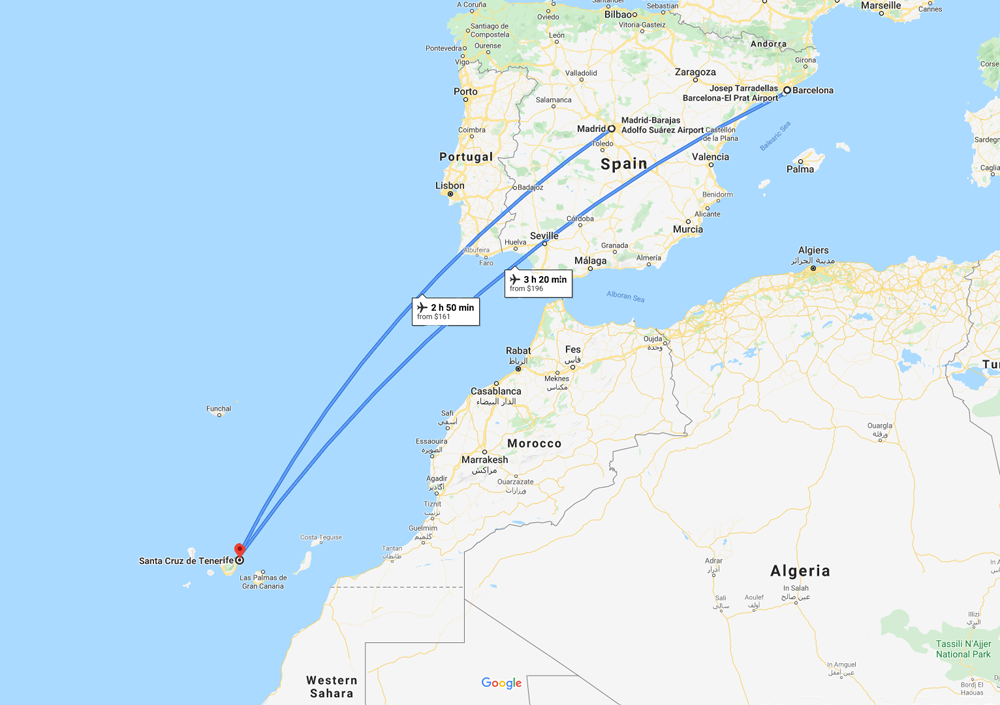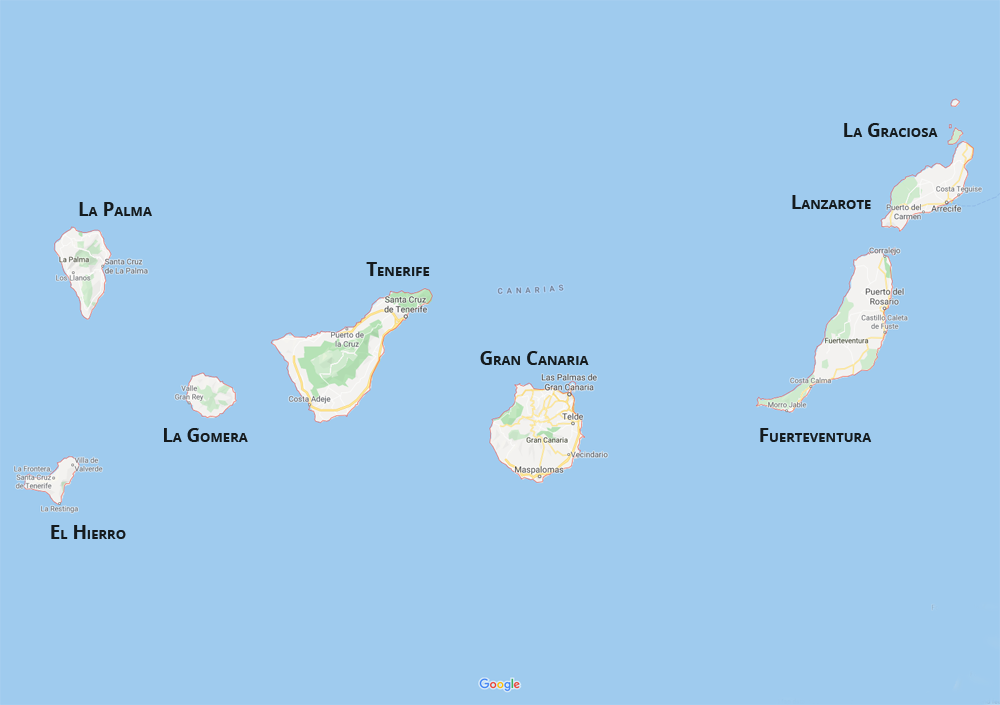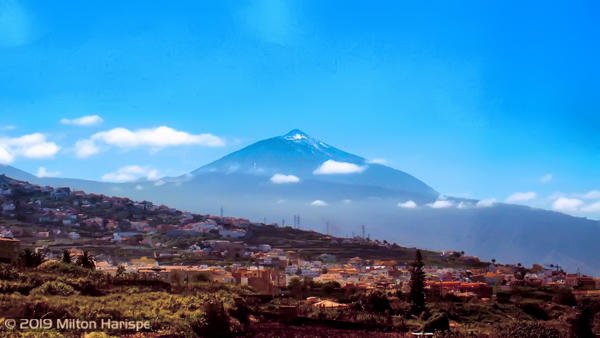Canary Islands
The Canary Islands are a Spanish archipelago and the southernmost autonomous community of Spain. They are located in the Atlantic Ocean, 62 mi (100 km) west of Morocco at the closest point and about 3 hours by plane from Madrid.
Also known the Canaries, they consist of eight main islands: Tenerife, Fuerteventura, Gran Canaria, Lanzarote, La Palma, La Gomera, El Hierro and La Graciosa. The archipelago also includes many smaller islands and islets. The Canary Islands have a population of over 2,000,000 inhabitants, there are two capital cities, Las Palmas and Santa Cruz de Tenerife.
Because of their mild climate and many activities The Canaries are a hugely popular tourist attraction to many Europeans, in particular those from the UK and Germany, so much so that in many locations there are sings in Spanish, English and German. The islands receive over 12 million visitors a year.
Tenerife
Tenerife is host to the Teide National Park and Mount Teide (a World Heritage Site). Mount Teide is 24,600 ft (7,500 m) high if measured its base on the ocean floor, this makes it the third tallest volcano in the world, it also makes Tenerife the tenth tallest island in the world. The mountain is home to the Teide Observatory a major international astronomical observatory.
More information about the Teide National Park >>
There is a significant number of microclimates on Tenerife making it incredibly diverse in flora and fauna. 1,400 species of plants exist on Tenerife, 100 of which exist only on the island and nowhere else in the world.
The Canaries are not named after the birds, rather to an account from an expedition in 40 BC of encounters with large numbers of fierce and large dogs, the Latin name for dog is “canis”. The account of the expedition reached the Romans and have been preserved in writings.
The original inhabitants of the islands were called “Guanches”, they are considered to have been tall and blonde, their culture and legacy is still present in the islands. Their origins remain a matter of dispute, some think they may have come from central or southern Europe, other writings suggest that they were perhaps the descendants of Atlantis.
The Canary Islands’ history is long and rich, entire books have been written on the subject, this article is just meant to be an overview and to give a general picture.
Tenerife is the largest and most populated island of the archipelago, with an area of 785 sq mi (2,034 sq km) and a population of almost 1 million, with an additional 5 million visitors a year. Santa Cruz de Tenerife is its largest city with an urban population of about 500,000.
Enjoy the video below courtesy Expedia and YouTube:
There are so many restaurants, so many things to do, so many places to visit and it is such a beautiful place that you could live an entire life on the islands and never get bored.
For more information you can visit this Tenerife Tourism website.


